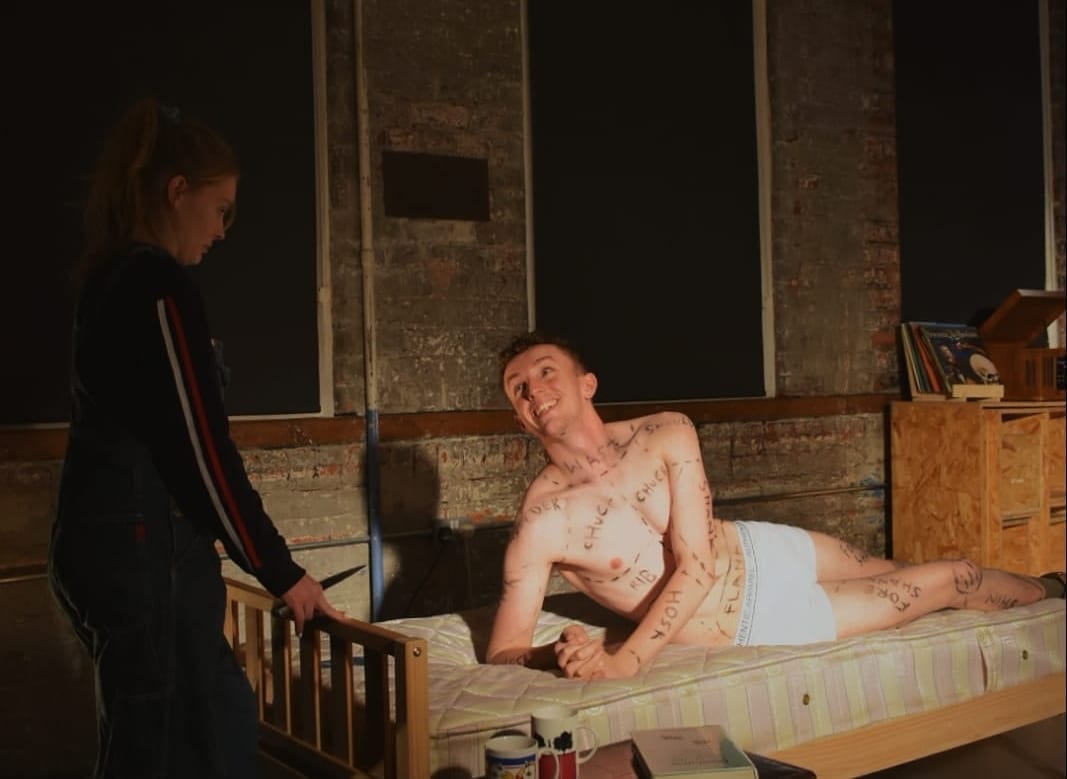Only Lucky Dogs, an emerging student-led company, once again barrels onto the Sheffield theatrical scene with another trademark dark comedy to tickle and trouble audiences with its tri-narrative structure confronting themes of religion and morality, misogyny and the morals of eating meat… and people. The play consisted of three fast-paced, engaging and intriguing character studies.
All three stories were impressively interwoven with each other – the dexterity of this interlinking was particularly prevalent in the clever link between the first and last story.
Most notably the final scene between writer and director James Huxtable as Jared, and Matthew Bevan as Marty, was the strongest, most coherent and most dynamic scene. Every line and movement was deliberate and emphasised as they discussed the religious ethics of sin framed within an exploration of the Irish troubles. Huxtable and Bevan had strong chemistry and comic timing together and Huxtable’s performance was committed, disconcerting and unhinged with his shaved head and bloody fingertips.
Moreover, Joe Kinch’s performance in the second study was noteworthy, entering the stage in his underwear, his exposed torso and limbs marked up to show what type of meat will come from each part of his body. This imagery was effective and epitomised the entire play as it is simultaneously funny, morbid and evocative.
The use of traverse staging was effective, creating an intimate experience and the two sides of the audience almost seemed to symbolise the two sides of the debate, particularly in the third story arc – the dichotomy of good and evil, to eat people or not to eat people – that is the question.
Another remarkable element of the play was the costumes, designed by Nora Murphy. The costumes were used to set up certain expectations and preconceptions about the characters only for them to be shattered by the characters’ dialogue, exposing their true natures.
However, there were some areas for improvement. The first of the studies was a Fleabag-esque monologue about a literal man-eating, vengeful feminist, channelling her rage into something constructive… cannibalism. Harriet Anderson as Kelsey did admirably to carry a whole scene by herself; however, it lacked punch and commitment as she was confined to the small kitchen area of the minimalist set for too much of the scene. This scene could have used more structured direction, as it lacked dynamism and purpose. The discussion of misogyny central to this scene, though important and in some ways thought-provoking, at times felt disingenuous, overplayed and gratuitous.
Overall, the play was engaging, portraying cannibalism as a product of disillusionment with society due to oppression. This is Huxtable’s best play so far, and he seems to be improving and honing his style with each new play he writes. I am interested to see what he does next. However, a controversial topic cannot be expected to carry the play, and I would have been interested to see the exploration as more metaphorical rather than explicit, as well as more focus on making every line and movement throughout the play ooze with purpose. Yet, I am sure as the fledgling company gains more experience and traction, they will only go from strength to strength, and I look forward to watching their future endeavours.

